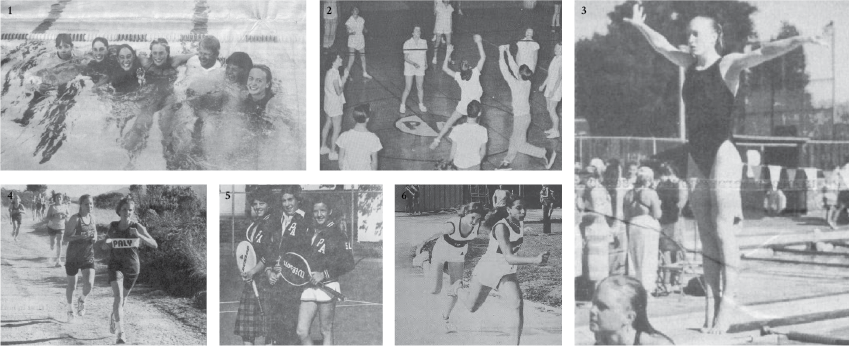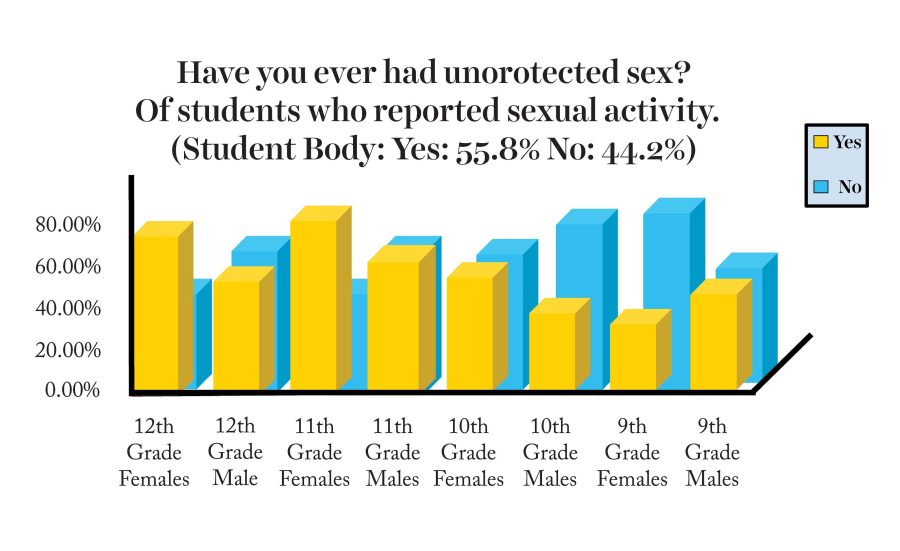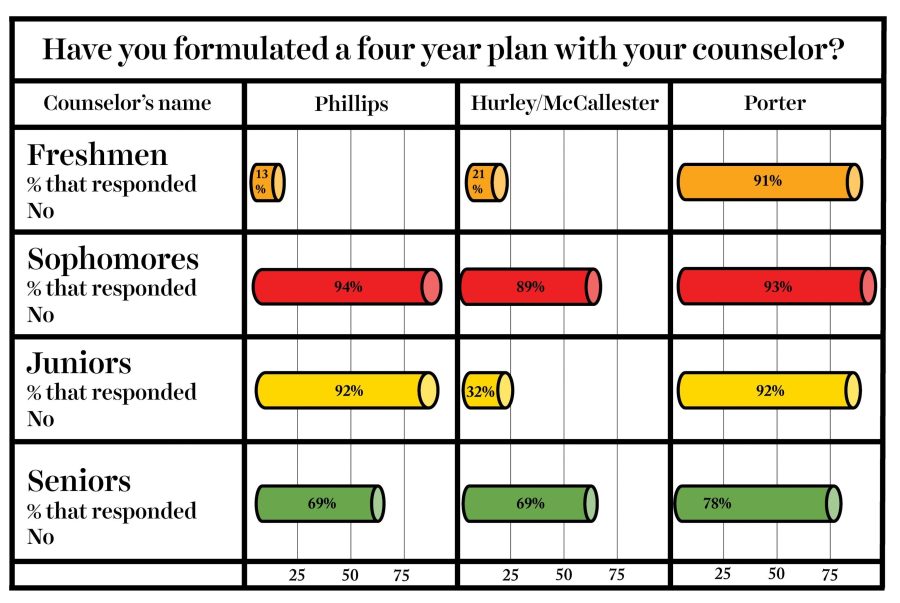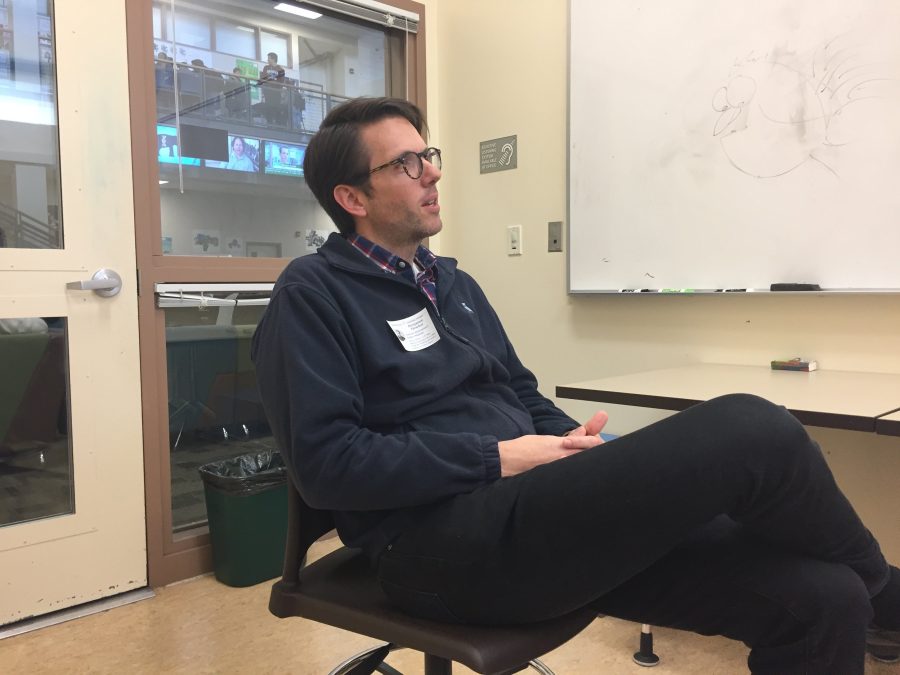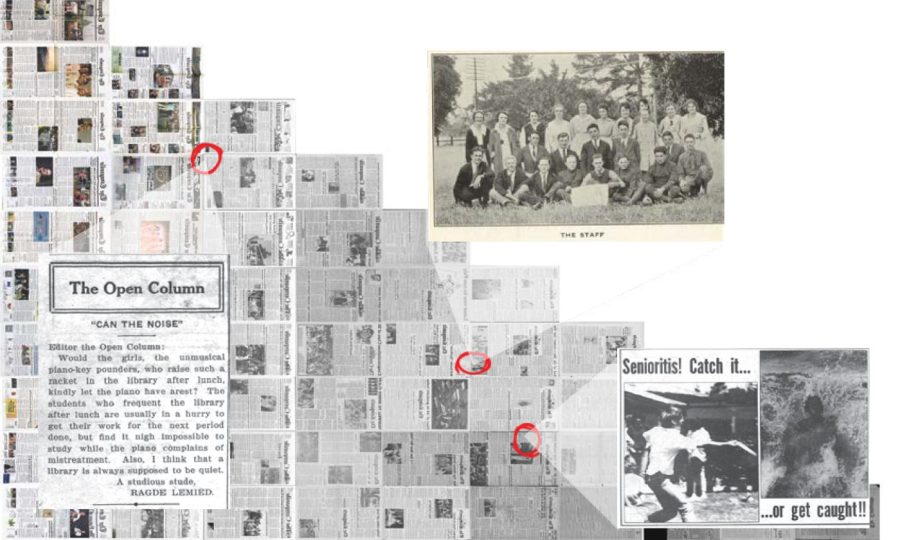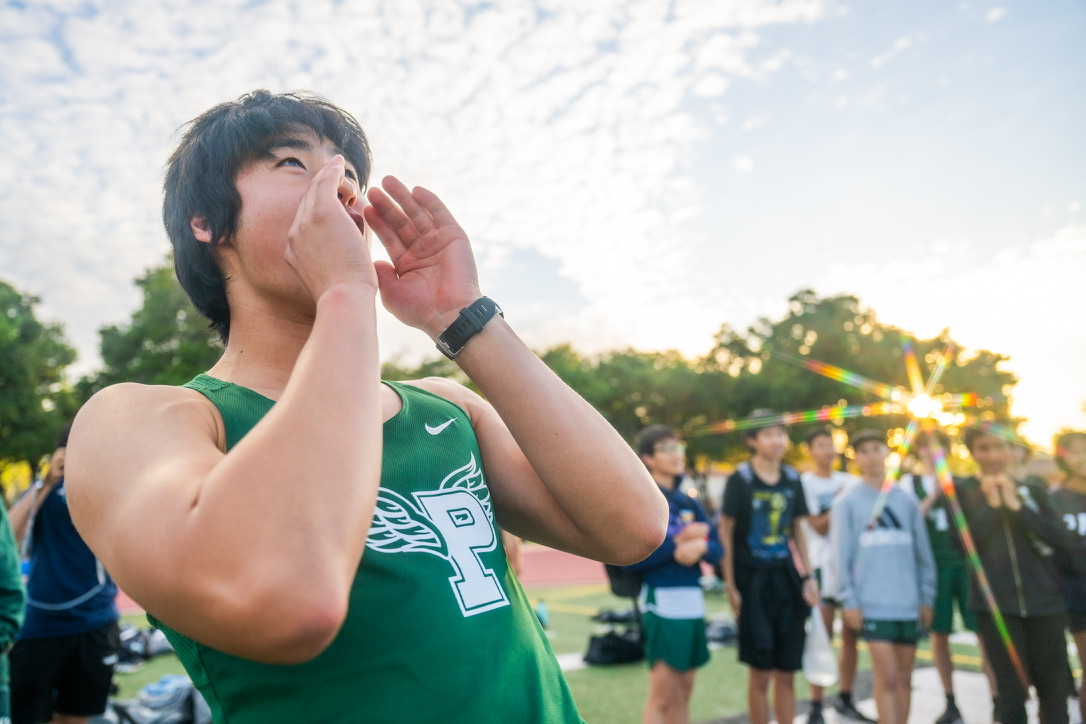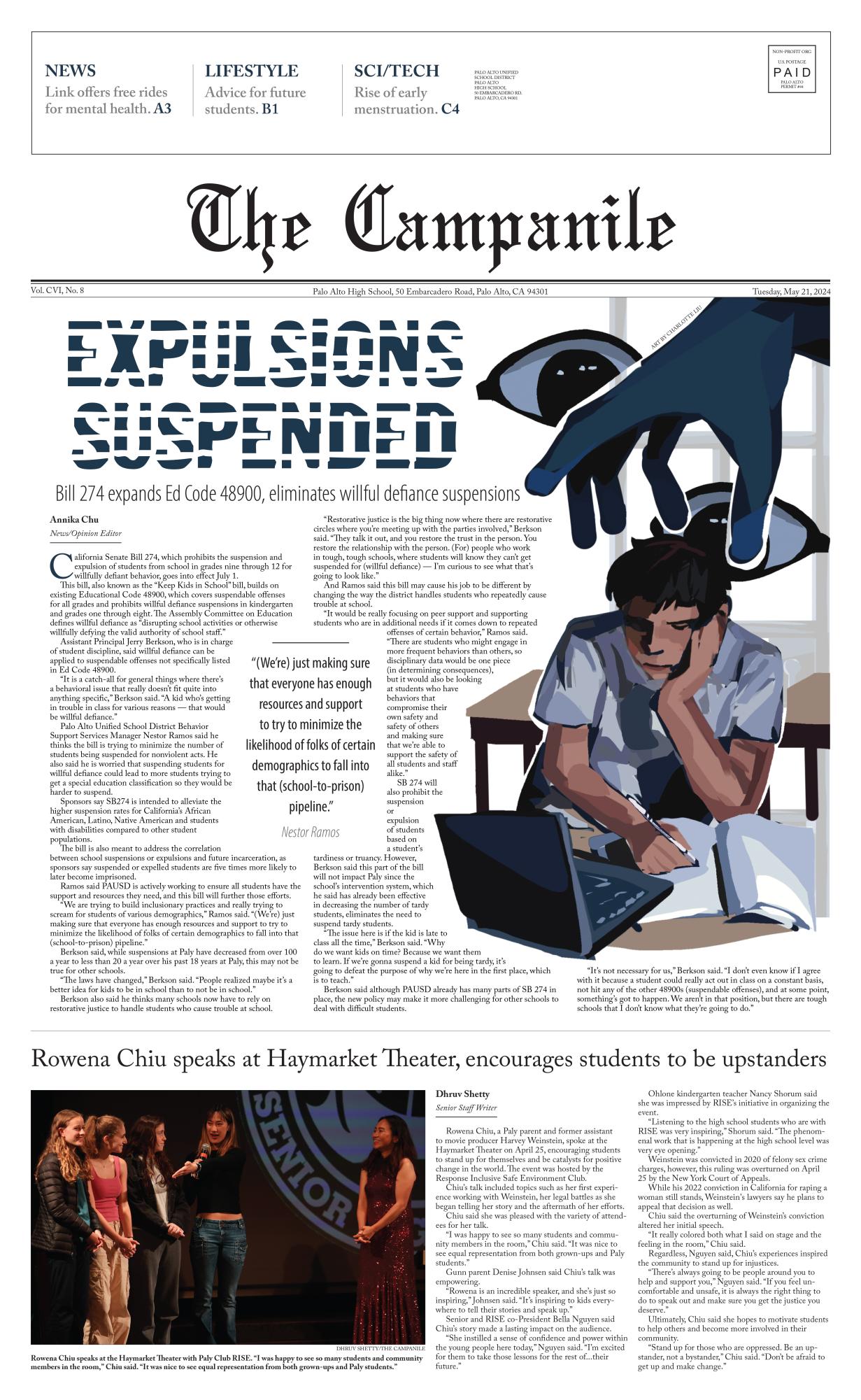Just two years prior to the passing of the 20th Amendment, when Paly opened as the first high school in the city, the school had a wide disparity in athletic opportunities for male and female students. Only male students were allowed to try out for the majority of after-school sports, and Paly hosted separate Physical Education (P.E.) classes for boys and girls.
However, in the century since Paly began, an enormous amount of progress has been made through Title IX and the power of active student reporting in the fight for equal access and opportunity for women in the realm of athletics and beyond.
As early as 1918, long before Title IX was enacted, Paly took its first steps towards providing opportunities to female athletes by hosting after-school girls basketball, hockey and tennis teams. The Campanile reported on our female sports teams in 1919, the first year the paper ran.
“It was feared for a while that hockey would have to be discontinued on account of lack of numbers because many girls flew to basketball when there was a chance,” reported The Campanile on Jan. 22, 1919. “But many have turned out and the practice started again yesterday.”
The Campanile began publishing longer stories on girls after-school teams, and helped publicize the ways that Paly administration promoted efforts implemented by the school to promote girls’ participation in sports, spanning from physical education classes to clubs. The Campanile even published an opinion piece on why girls should attend the first “playday” in 1929.
“Every girl out for a sport!” reported The Campanile on Oct. 3, 1929. “Do you like hockey, basketball, tennis, volleyball and swimming? Choose your sport and come out. You will find your high school life will be enriched. What could be a better way of making friends, than by playing together? Come to playdays and make friends with girls from other schools. You can’t play with girls without getting to know them. Earn fifty points and become a member of the Girls’ Athletic Association.”
To continue the streak of supporting girls athletics, The Campanile published a letter to the editor of Madrono later that year highlighting the lack of representation of girls in student media at the time.
“To the Editor [of Madrono]: Why aren’t the girls’ athletics of Paly more fully represented in the Madrono?” reported The Campanile on Nov. 21, 1929. “Last year there were only two pictures of girls’ teams. There was none of the Girls’ Block P. Society which is more important than the G. A. A., which had a picture. The girls work fully as hard to make the Carnival, which finances the Madrono, a success. Why aren’t they given their fair share in the annual. Do two or three pages of girls’ sports to over twenty pages of boys’ make a fair ratio?”
In 1952, coeducational P.E. was introduced at Paly.
According to an article from The Campanile, “a group of young misses from the girls P.E. Department came shuffling quietly into the boys’ gym . . . With the help of gym teachers, a new program began, which by this time has become an established custom.” Up to this point, P.E. was taught separately to boys and girls.
Title IX was enacted in 1972, prohibiting federally funded educational institutions from discriminating against students or employees based on gender.
Soon after the enactment of Title IX, Paly increased the number of girls’ sports that it offered. In 1976, Paly’s first-ever girls soccer team was created. The Campanile wrote an article on the team’s establishment on Dec. 10, 1976. Amy Shumway of The Campanile reported, “This is the first year Paly has fielded a girls’ soccer team. Right on jockettes!” According to Shumway, Paly was one of the many schools in the Santa Clara Valley Athletic League (SCVAL) to have added girls soccer to their sports program that year.
At the time, Sandy Ostrau was a junior and a standout player on the soccer team.
“At Paly I was thrilled to be able to play soccer for my school. That first tryout was surprisingly popular and a lot of girls came out. There were enough players for varsity and JV teams. Many had never played soccer but wanted to give it a try.”
Sandy Ostrau
Although there was now both a boys and a girls soccer team, the boys continued to be Paly’s first priority. The girls team did not receive much attention or support from other students, or the the administration. Starting from the ground up, the soccer team faced many difficulties. According to Ostrau, their coach had never coached a soccer team before, having mentored volleyball previously.
“The coach was very nice but nothing compared to the kind of coaching the boys had,” Ostrau said. “We were just grateful to be able to play at all on a brand new team. The boys team had access to the best fields and we had to schedule around the boys for buses for transportation to away games. There was no question the boys team had much more support, but I believe each year offered improvements to the girls team.”
Later that school year, a girls track team was established as well, which The Campanile reported on in May 10, 1997. Devon Hinton, the writer of the article, included a discourteous remark at the end of the story. “Whether you watch the girls for their track or aesthetic qualities, I am sure you will enjoy yourself,” Hinton said.
After Title IX, new girls teams were constantly being created at Paly. Subsequently, girls sports at Paly performed exceptionally well in the following years. An article written in 1978 described girls’ success in all sports for Paly. The Campanile wrote, “The girls sports teams have made themselves known throughout the school and throughout the SCVAL league. The fall season was highlighted by the vikings’ hockey and tennis teams, as they both captured SCVAL league titles.”
In 1996, the first girls water polo team was created after several years of perseverance. The Campanile reported, “Several attempts to form a team had been made and defeated by the administration in previous years, but this year, in the spring of 1996, the Lady Vikes will have their very own team.” The team was created because of public interest. To make way for this team, the school had to remove girls gymnastics as a team.
In October 1998, sophomore Caroline Lucchesi wrote the following letter to the editor of The Campanile:
“Editor — I hate how girls sports get practically no recognition. They get no money. No one cares if they have a bad coach, not enough equipment or not enough money—it’s all about guys sports. Football gets tons of stuff; boys basketball gets warm-up suits—even JV. The JV girls get nothing and the Varsity girls got jackets. Last year, softball got nothing—all of it went to baseball. It really makes me mad. I wish that someone would care a little bit about girls sports.”
Just four months later, freshmen and softball player Cindy Staehnke wrote a letter to the editors addressing the same issue. According to Staehnke, they did not have uniforms and their first game was in less than two weeks. The girls themselves had to pay for sports boosters, along with their own uniforms, equipment and jackets.
In the sports world, some students reflect on the early efforts made my Paly to ensure opportunities for females interested in athletics.
“I think it’s important to have women’s sports because it wouldn’t be fair if just guys got the opportunity,” said junior and varsity lacrosse player Abby Ramsey. “There’s no reason not to have equal funding. I think it’s really cool that Paly supported women’s sports and funded women’s teams before Title IX. It just shows a little about how our school was ahead of the nation.”
In the past few years, students and parents at Paly have been pushing for a boys volleyball team. While Title IX has mostly been used to promote girls sports teams in previous years, several parents of Paly students petitioned through the act that boys volleyball should be allowed to create a team.
In October 2014, The Campanile wrote an opinion piece calling for the creation of a boys volleyball team.
“Not having a men’s volleyball team can be seen as sexist to the male population — for each male sport there is a female counter sport; however, there is no men’s volleyball team to complement the women’s volleyball team.”
Dami Bolarinwa
In winter of 2018, a dream became a reality for boy volleyball players when a team was instituted at Paly.
The Campanile reported, “The boys team was added to Paly’s athletic program because of Title IX, a federal civil rights law that forbids discrimination in any educational program. This year, Title IX was used in an attempt to promote a boys volleyball team at Paly and Gunn.”
Although the battle to ensure equal opportunities for all has come a long way since Title IX was enacted, there is still room for improvement in the realm of athletics.
“I would tell any current female athlete to fight for the right to play their sport,” Ostrau said. “Playing a sport is empowering for girls and sets them on an equal footing with boys and provides so many valuable life skills.”

